Executive Summary
Walkability is not a luxury. It is a core civic right that affects public health, air quality, road safety, and the dignity of everyday movement in Bangalore. Yet across the city, poor walkability is contributing to dangerous streets and rising harm to citizens.
Across Indian metros, pedestrians account for over 30% of road fatalities, the second largest cohort after two-wheeler users. In Bangalore alone, there has been a 77% increase in pedestrian deaths from 2021 to 2023.
Bangalore’s overall Walkability Index stands at just 16.5 out of 30, a clear sign that systemic neglect persists even on better- known streets. Poor walkability also directly discourages sustainable mobility, worsens traffic congestion, and contributes to unhealthy air and increased noise pollution, with Bangalore among India’s most polluted metros. This report presents findings from a citizen-led audit of CMH Road. Conducted by 16 participants, the audit provides first- hand observations of persistent gaps in safety, accessibility, and street maintenance.
Improving walkability is about far more than footpaths. It is about building a safer, healthier, and more inclusive city for everyone.
Audit at a Glance
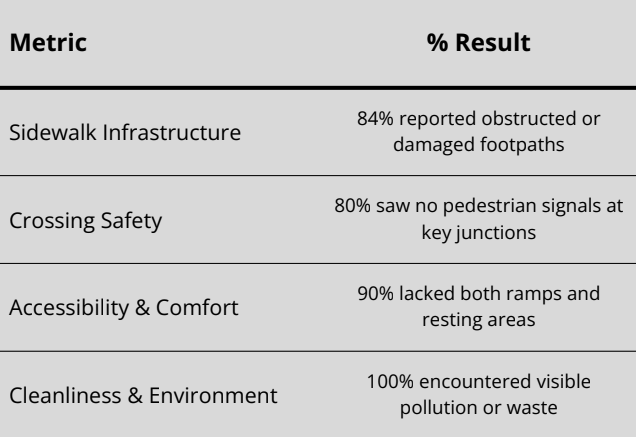
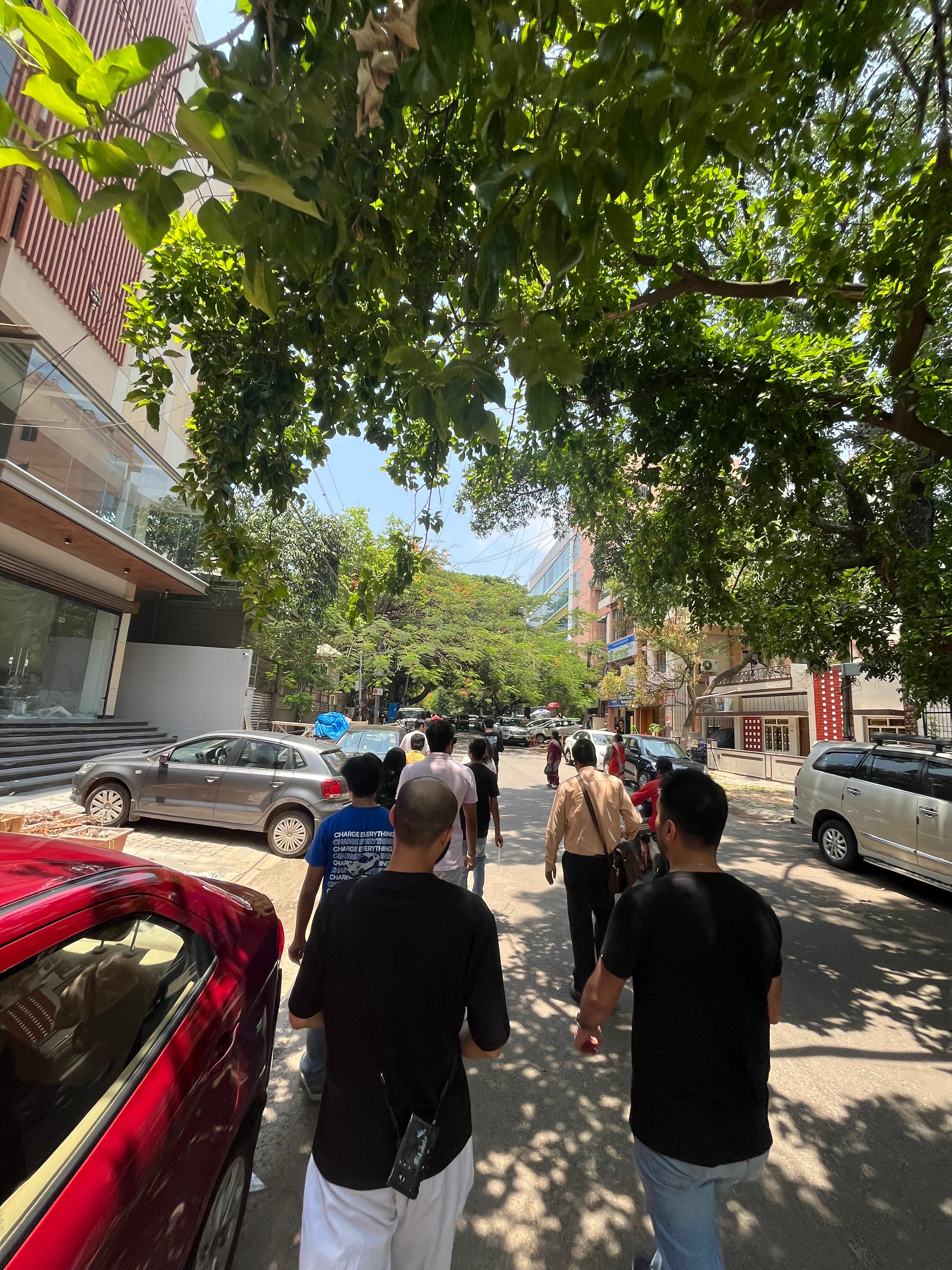
About This Audit
This walkability audit was conducted on 3rd May 2025. Our goal was to assess real-world pedestrian experiences on a well- known, centrally located street - CMH Road in Indiranagar.
We chose this stretch deliberately: CMH Road is relatively better resourced and walkable than most parts of the city. If gaps exist here, they likely exist more severely elsewhere. Also being a very well known spot for most Bangaloreans, with plenty of footfall.
Route surveyed:
Participants began at the KFC junction on CMH Road, walked ~500 meters toward a designated midpoint, crossed the street, and returned. Each pair covered one direction of the route, ensuring full coverage on both sides of the road.
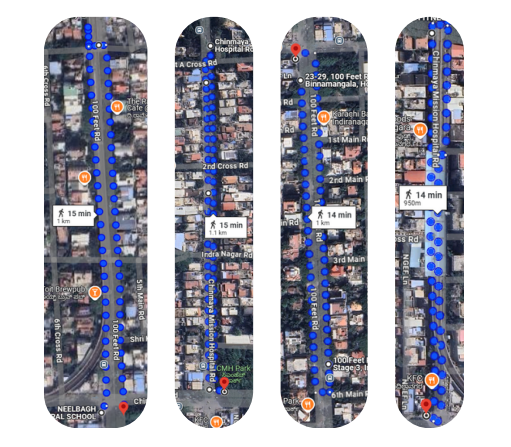
Participant Overview:
-
16 participants
-
Observations included photos, multiple choice questions, and open-ended reflections
-
Each submission was verified for completeness before inclusion
Survey Focus Areas:
-
Sidewalk continuity & condition
-
Crossing safety & signage
-
Accessibility (wheelchairs, strollers, vision-impaired users) & Comfort (shade, resting spots)
-
Cleanliness & environmental quality
We designed the audit to be quick, simple, and reproducible, encouraging future citizens to run similar audits in their own neighborhoods.
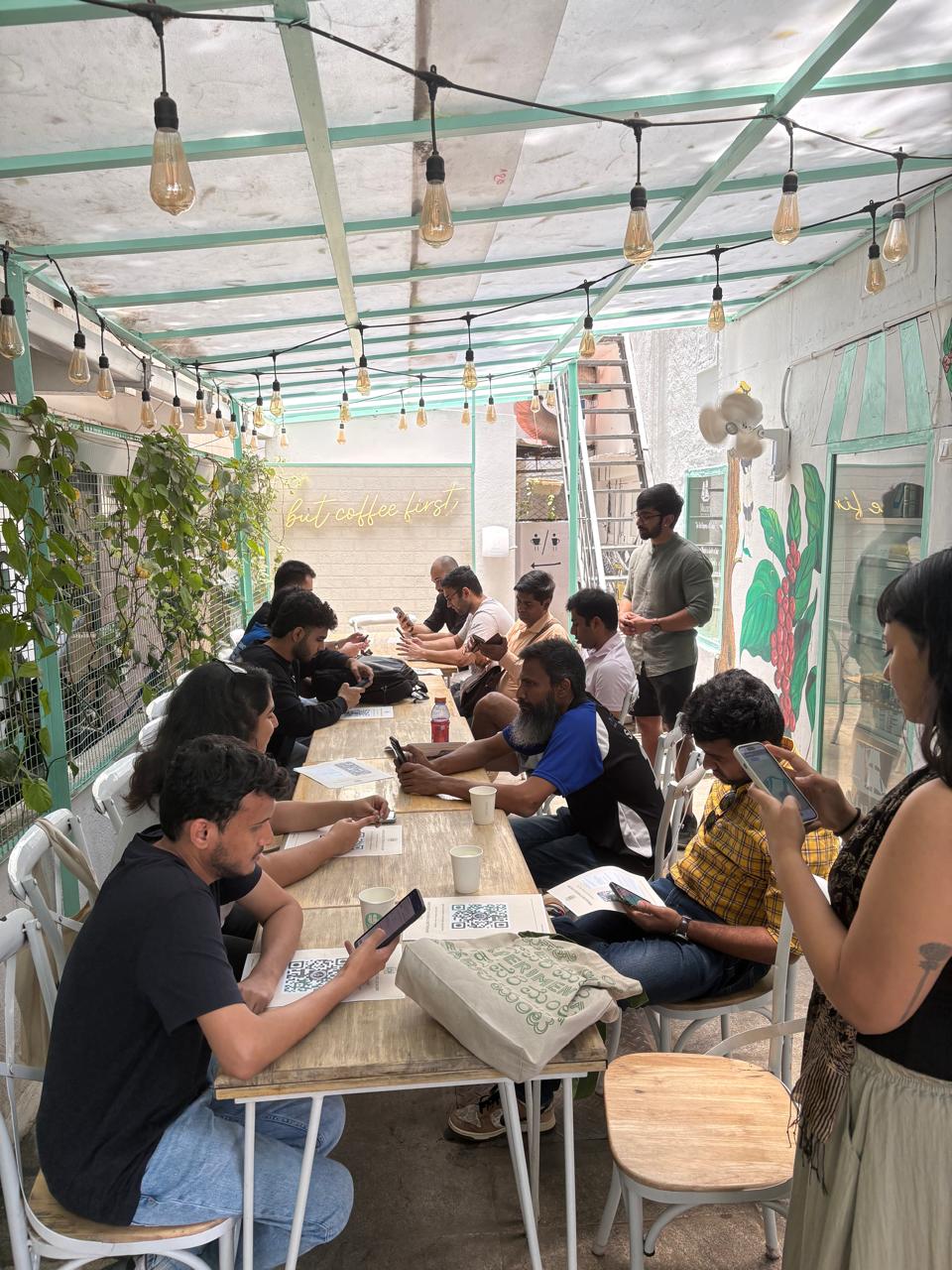
Key Findings
1. Sidewalk Infrastructure
While CMH Road is a relatively “walkable” street, the audit revealed persistent gaps and hazards on its footpaths.
-
90% of submissions reported obstructed or broken sidewalks
-
60% noted direct footpath encroachments from parked vehicles, shop signage, or construction material
-
Live wires and open cables were noted in 40% of participant comments
-
No dustbins found along all routes, leading to garbage piles and waste
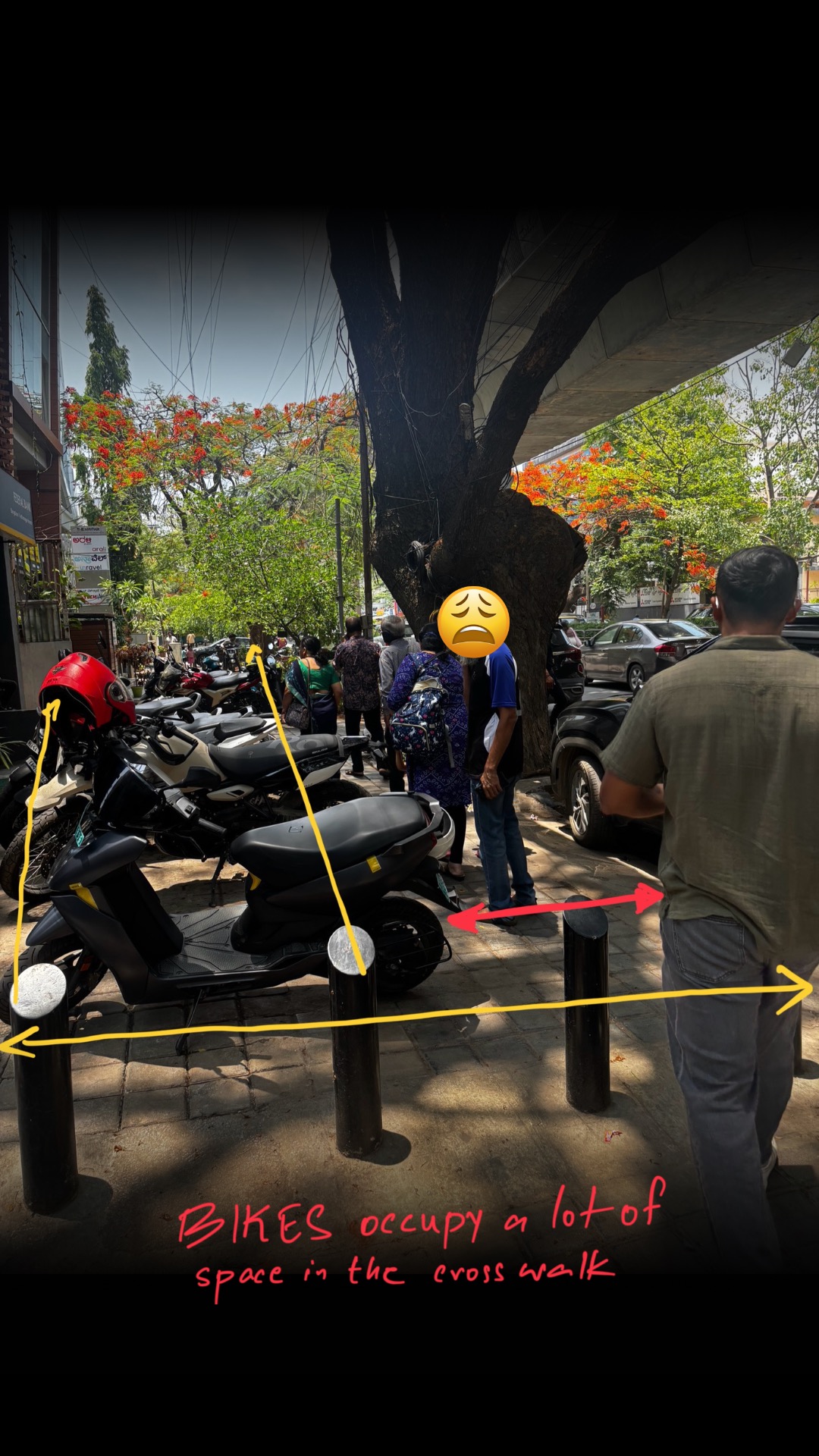
“Sidewalk is wide enough, but upkeep is poor. Debris, open cables, encroachments.” - Nihal
“Footpaths are present but not maintained. Multiple vehicles obstructing the footpath.” - Sandy
Participants reported that even when sidewalks were wide, actual usable space was often reduced to narrow strips due to these obstacles.
Gaps between footpath segments were also noted in multiple spots, forcing pedestrians to walk on the road.
2. Crossing Safety
Across all four audit routes, participants consistently reported that road crossings were unsafe, unmarked, or unregulated.
-
70% of participants rated their crossing experience as unsafe (1 or 2 on a 5-point scale).
-
60% observed either faded or barely visible zebra crossings.
-
50% reported an absence of pedestrian signals, and the remaining 50% reported that there were some, but missing, at intersections and key crossings.
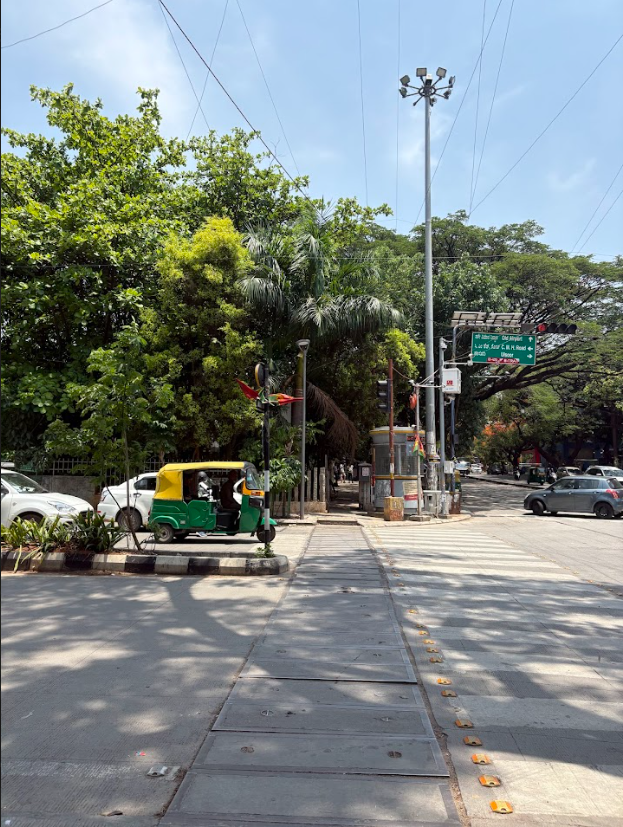
“Crossing the road near Cult Gym felt like a gamble.” - Anish
“There were no traffic lights at cross paths near a hospital, that’s extremely unsafe.” - Tanishq
Auditors noted that while some vehicle traffic signals existed, pedestrian-specific features were entirely absent.
No countdown timers, no audio cues, and no signage instructing where to cross were observed, exposing pedestrians, especially elderly, children, and people with disabilities, to vehicles.

3. Accessibility & Comfort
The audit revealed that walking on CMH Road offers very little in terms of comfort, universal access, or inclusion.
While some areas were shaded and had wider sidewalks, the overall pedestrian environment was lacking in basic amenities, especially for the elderly, disabled, or those walking long distances.
-
90% of submissions reported no benches or resting areas across their routes. One participant noted a bench at a bus stop, the only such instance across all four surveyed paths.
-
90% reported a lack of ramps or wheelchair/stroller access.
-
80% found no accessible features for visually impaired pedestrians.
-
70% noted shaded paths in some stretches, mostly due to natural tree cover rather than deliberate urban planning.
Participants also flagged footpath surfaces that were uneven or abruptly sloped, making walking uncomfortable or hazardous, especially for older adults or persons with reduced mobility.
The results suggest that walkability in Bangalore is not just unsafe but also exclusionary.
“Not good enough for long walks, jogging, or elders.” - Adityan
“No benches, no ramps, no consistency. You’d struggle with a stroller, let alone a wheelchair.” - Gopika
4. Cleanliness & Environment
Participants consistently highlighted issues related to waste management, noise levels, and general upkeep, all of which impact the comfort, dignity, and health of those walking along CMH Road.
-
80% of submissions reported visible garbage piles along sidewalks or near crossings.
-
100% of participants did not find public dustbins along the audited routes.
-
All participants reported some level of noise pollution, largely from honking, congested intersections, and commercial traffic.
“Too many obstructions — potholes, trash, transformers, wires...” - Jasdev
“Dustbins were missing. A lot of waste piled up on sidewalks.” - Irthu
“Lots of honking and vehicle movement. No stop signs or traffic discipline.” - Parv
Most participants described the route as visually and physically chaotic, especially at intersections and shop fronts, with unattended garbage, construction debris accompanied with heavy roadside dust, and wiring compounding the experience of disorder.
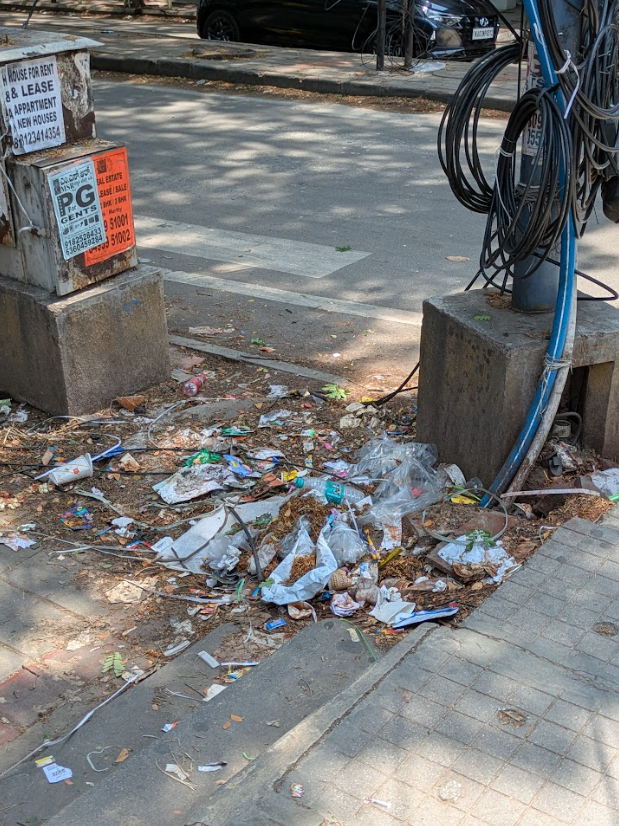
What Needs to Change
1. Fix and Protect Footpaths
-
Restore broken sidewalks: Prioritize segments where debris, potholes, or uneven surfacing pose safety risks.
-
Enforce anti-encroachment rules: Address vendors, parked vehicles, and construction blocking footpaths.
-
Create protected pedestrian zones: Use bollards, curb extensions, or landscaping to prevent misuse.

2. Improve Crossing Safety
-
Install pedestrian signals at high-traffic junctions especially near hospitals, gyms, and bus stops.
-
Repaint zebra crossings and install signage at all major intersections.
-
Add basic crossing infrastructure: curb ramps, tactile tiles, refuge islands where possible.

3. Ensure Accessibility and Comfort
-
Construct ramps and slope entries for wheelchair, stroller, and elder access.
-
Install shaded benches every 200–300 meters, especially at commercial zones and crossings.
-
Standardize sidewalk width: Ensure at least 1.8m of uninterrupted walking space per Indian Roads Congress guidelines. Needs to be more strictly enforced.
4. Address Cleanliness and Visual Safety
-
Strengthen garbage pickup coordination, especially at high-footfall areas.
-
Map problem zones and tie them to ward-level SWM (Solid Waste Management) teams.
-
Maintain and extend tree cover, particularly in hot and exposed stretches.
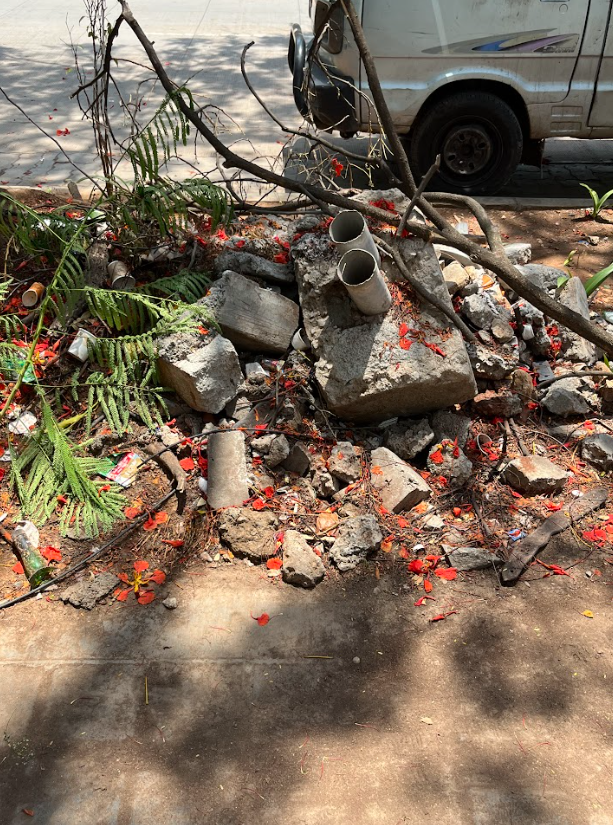
About Bangalore Ethereum Localism (BEL)
Bangalore Ethereum Localism (BEL) began in April 2025 as a community-led experiment inspired by the broader, global Ethereum Localism movement. At its heart, BEL connects neighborhood-level action with emerging digital tools to strengthen local civic and environmental resilience.
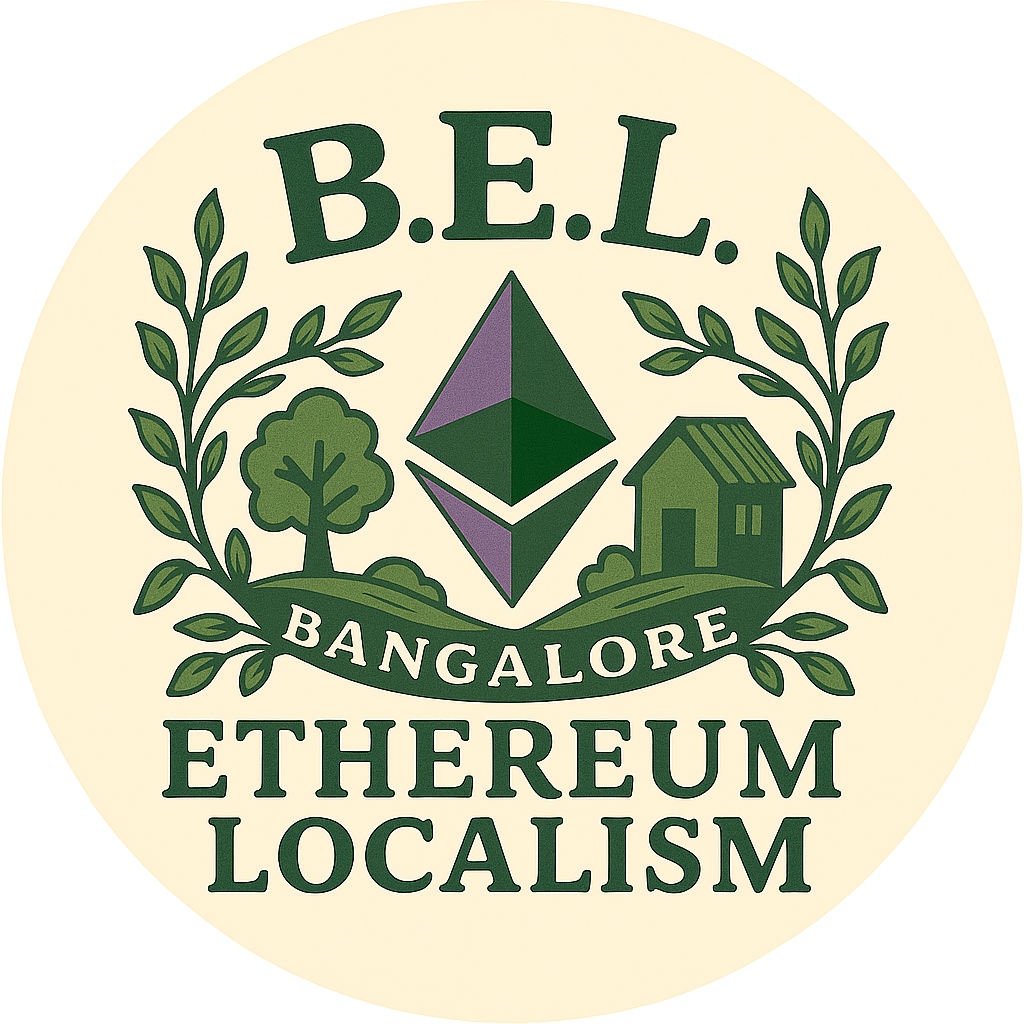
Our mission is simple:
Make Bangalore’s neighborhoods more livable, equitable, and visible, one block at a time.
BEL isn’t just about technology. It’s about showing what’s possible when people observe, document, and act on what they care about, together, while leveraging global technology.
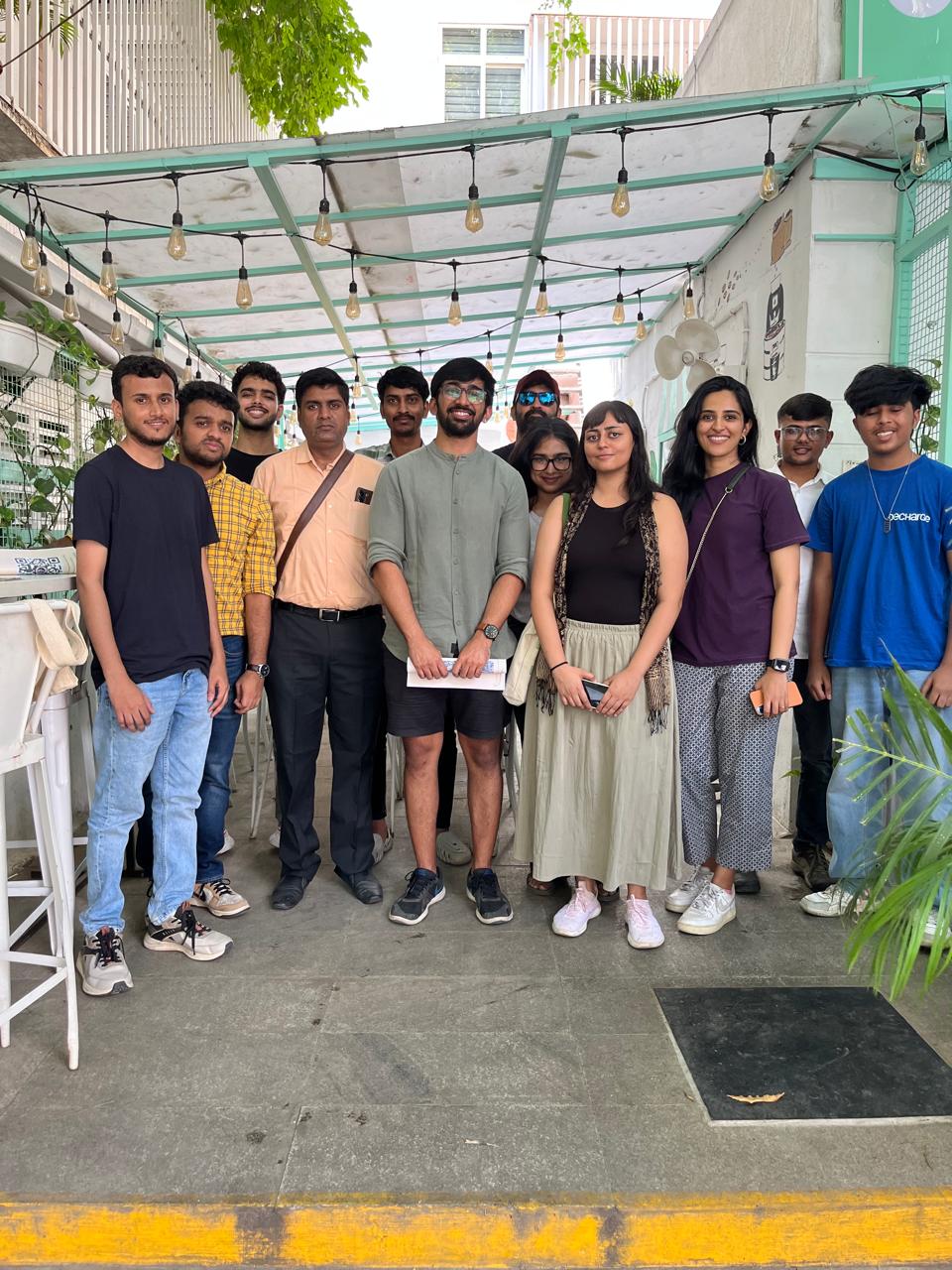
We run small, impactful efforts that:
-
Encourage residents to engage with their own streets and surroundings
-
Generate usable public data through lightweight audits and surveys
-
Recognize participation through onchain tokens and open documentation
-
Spark meaningful dialogue and awareness from walkability audits to preloved exchanges, composting drives, etc.
Follow BEL on: Twitter | Instagram
Credits & Methodology
Audit Details
-
Location: CMH Road, Indiranagar
-
Date: 3rd May 2025
-
Total Participants: 16
-
Walking Routes: 4 predefined segments, ~500 meters each (including return stretch) Midpoints were FR Bakery, Cult Gym, Goldstar Fitness, and Third Wave Coffee
-
Start and End Point for all routes: KFC, CMH Road
How the Audit Worked
Each participant was assigned a short route (~500m) to walk, observe, and document. They were asked to:
-
Photograph good and bad features
-
Record their start and end locations
-
Answer 20+ survey questions covering sidewalks, crossings, accessibility, environment, and overall experience
-
All media and notes were recorded through Atlantis’ web3 MRV tool, Impact Miner
Method of Analysis
-
All inputs were recorded on Atlantis’ digital MRV tool, Impact Miner.
-
All submissions were manually reviewed
-
Responses were coded into 4 main themes
-
Key statistics were derived based on total response count (10), unless otherwise noted
-
Quotes were selected from open-ended answers to illustrate key patterns
-
Photos were used to cross-check observations and add qualitative depth
Credits
-
Survey Coordination: BEL & volunteers
-
Participants: 16 citizens across age groups and coming from neighbourhoods across Bangalore such as Bellandur, Whitefield, Sarjapur, Koramangala, etc.
-
Survey Design: Impact Foundry, Atlantis
-
Report Analysis: BEL
Rewarding Real-World Impact
This walkability audit was launched as a public bounty on the Impact Miner app. Participants received proof-of-participation certificates, called Impact Certificates, which are NFTs, making their civic effort visible and verifiable.
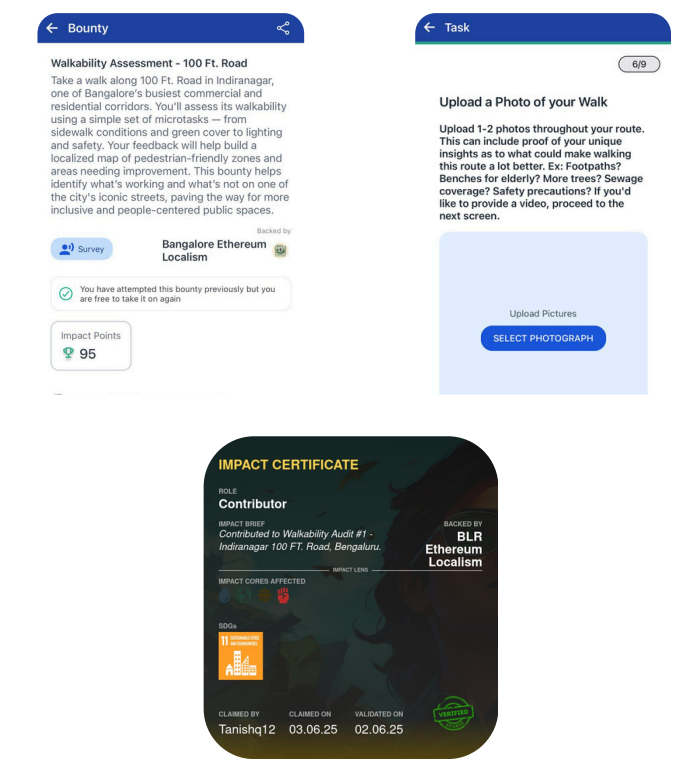


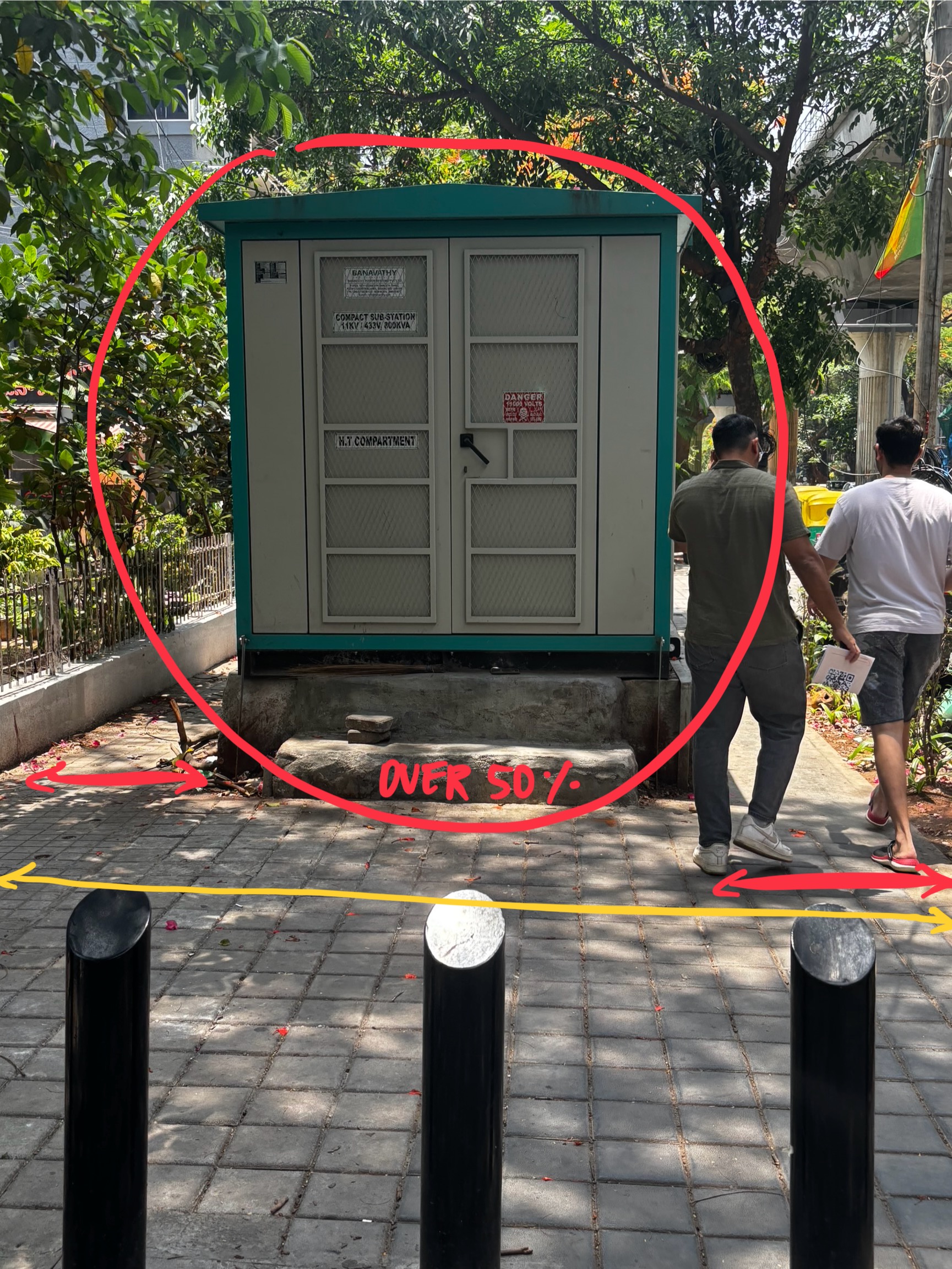
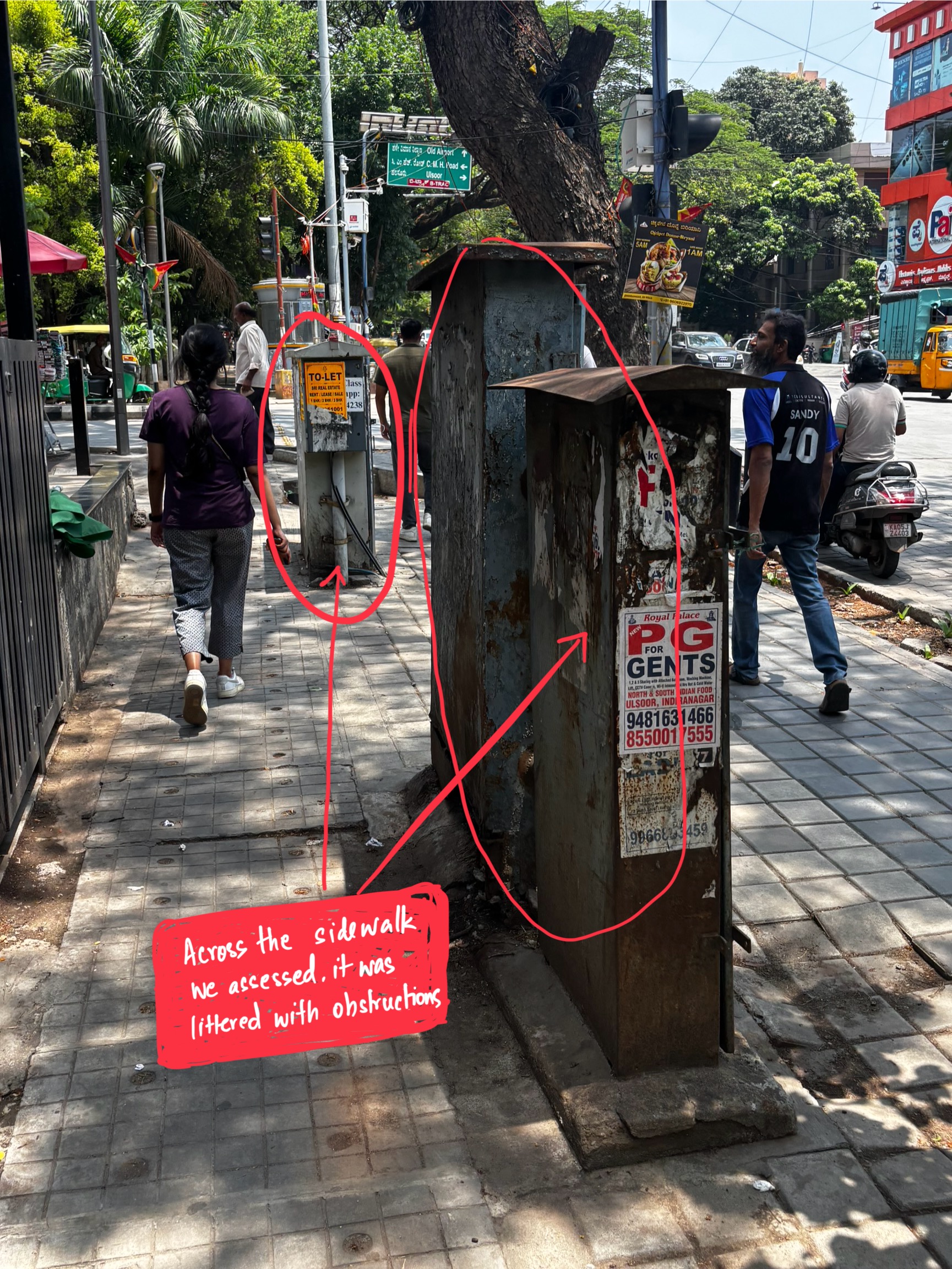
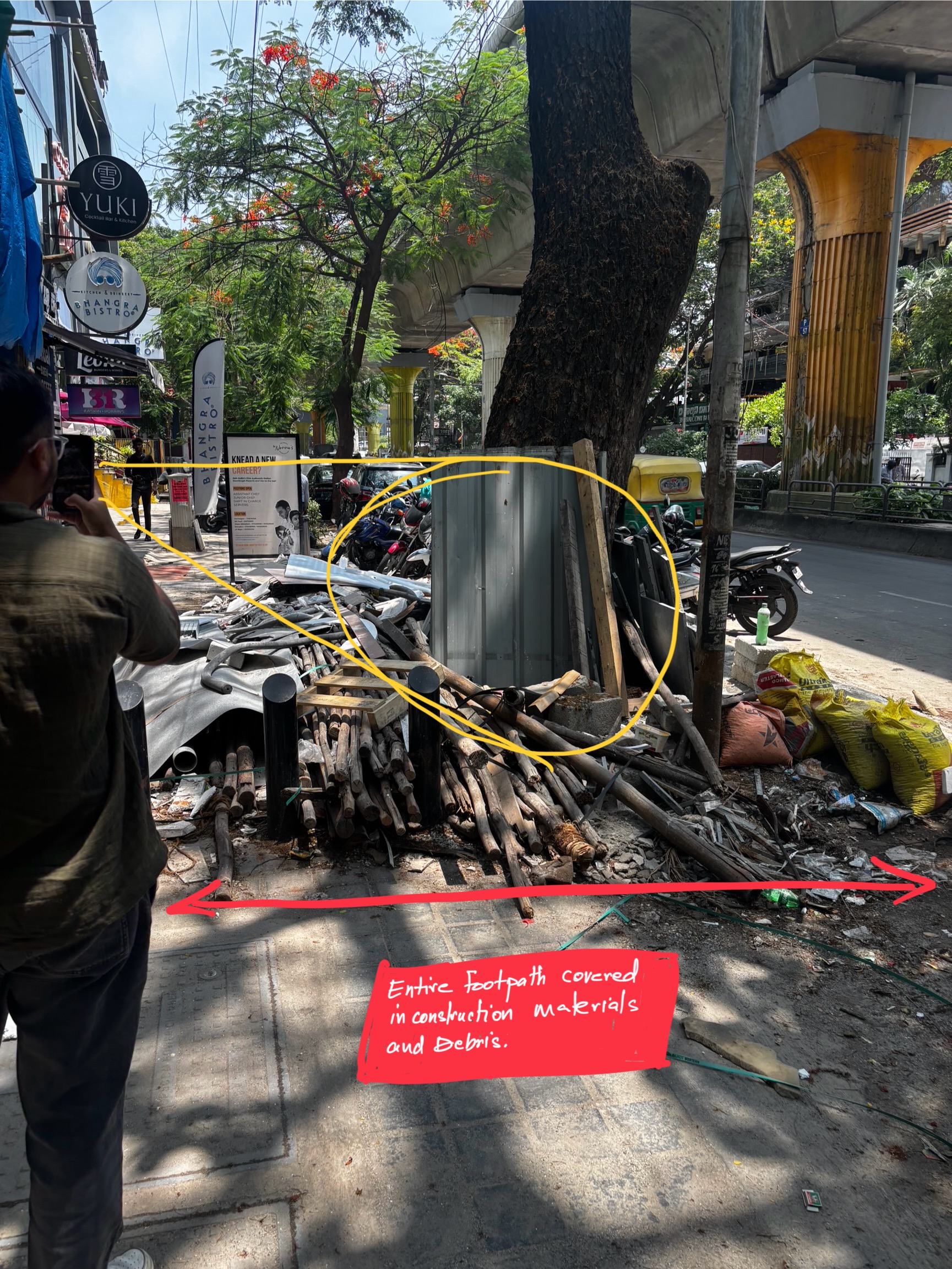
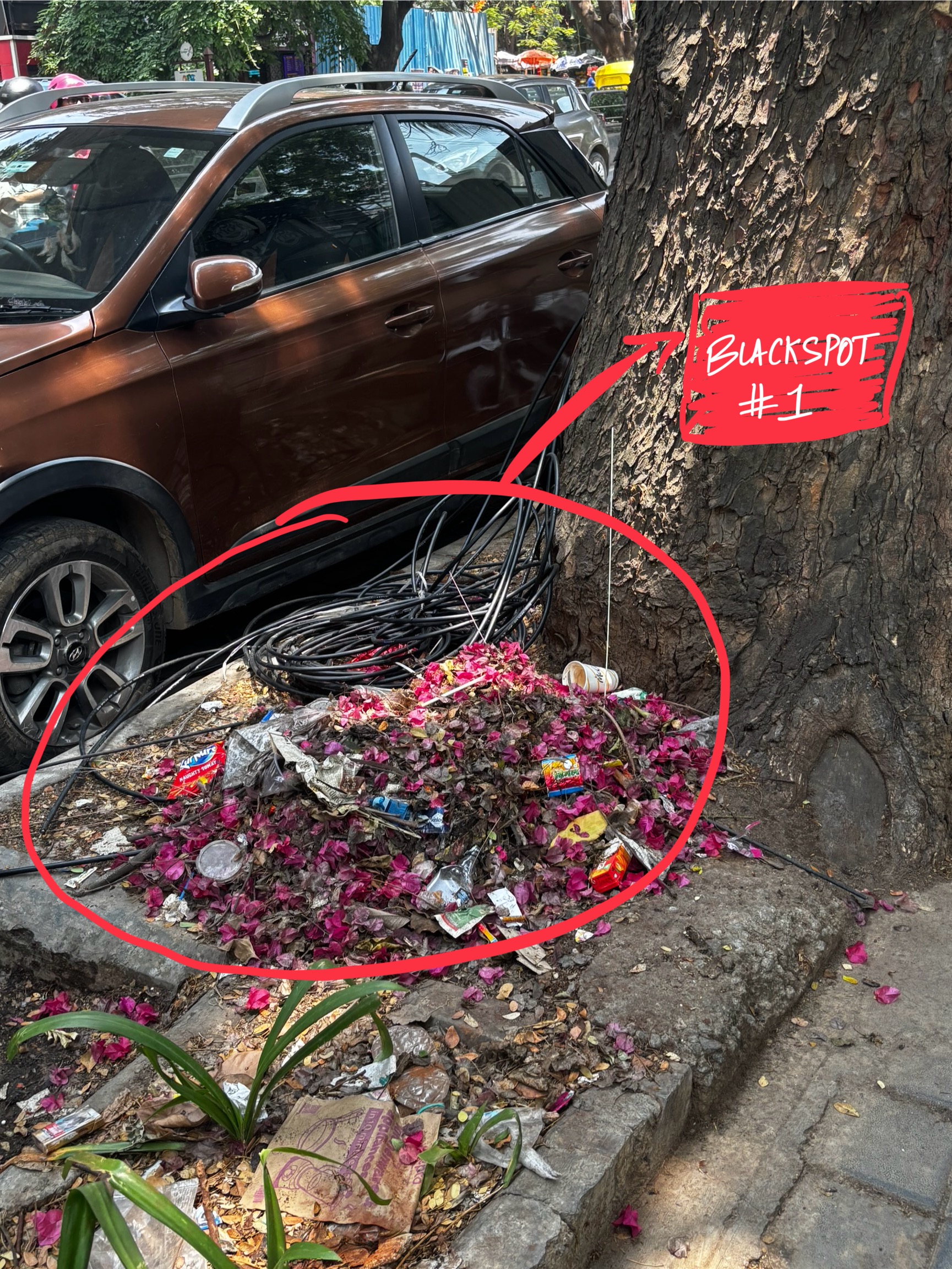
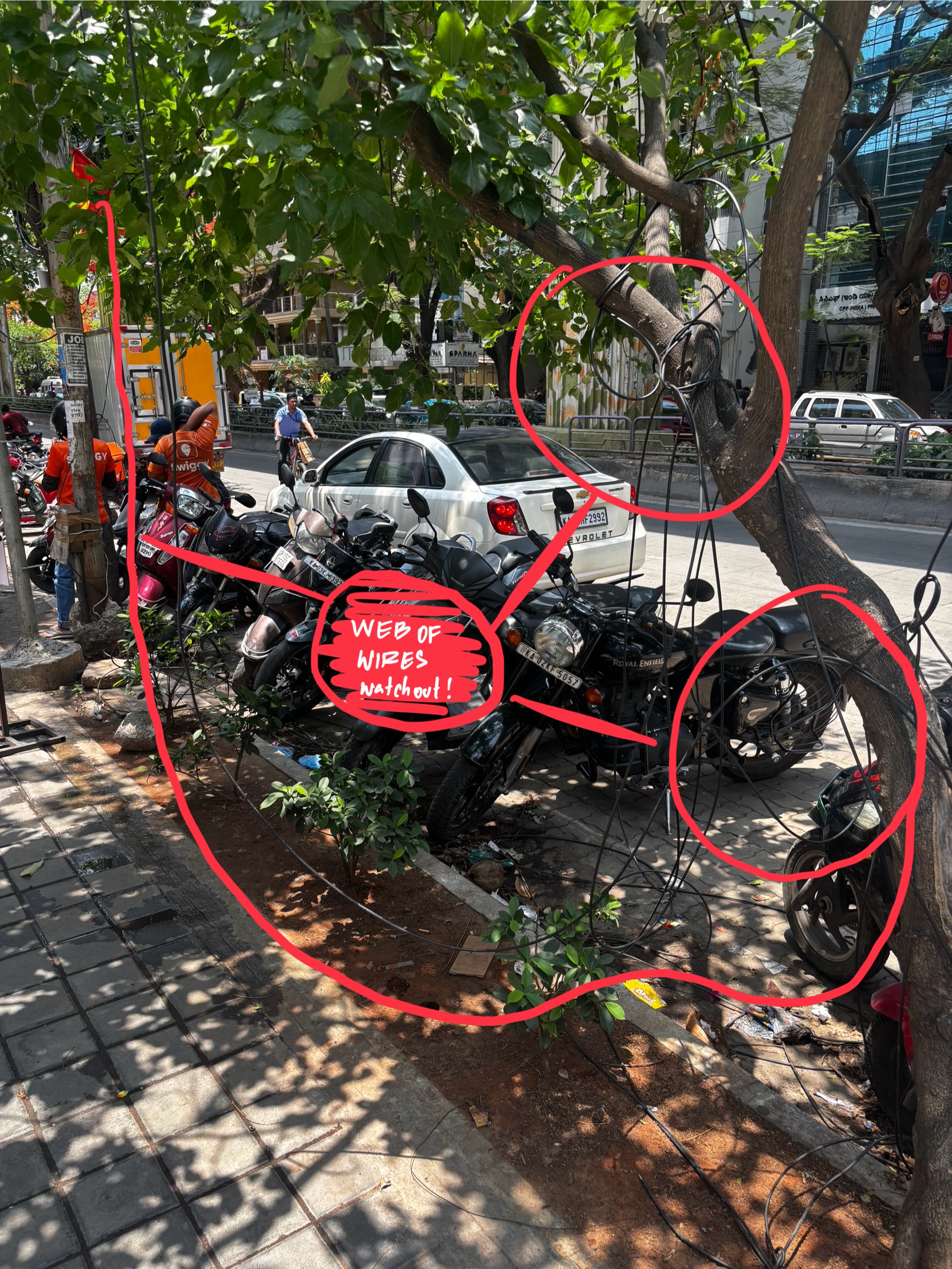


评论 (0)